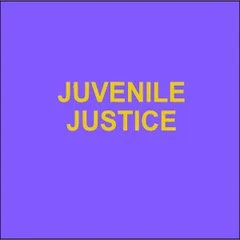By The Children's Commissioner (UK)
“I think there's a difference between a protest and a riot. A protest can be peaceful… whereas a riot is trying to get your message out, but not in the right way, like trying to scare people into listening to your message.” – Child, charged in the 2024 riots. The Children’s Commissioner’s ambition is clear: every child must be prevented from becoming involved in violence and criminality and able to fulfil their full potential. Yet the events that unfolded between 30 July and 7 August 2024 underscored how much work is still needed to achieve this. The murders of Bebe King, Elsie Dot Stancombe and Alice da Silva Aguiar in Southport on 29 July 2024, and the injury of 10 others, sparked mass public grief and anger. Demonstrations occurred across 26 areas of England, with some becoming violent, partly fuelled by false claims spread online that the perpetrator was a Muslim asylum seeker, intensifying existing anti-immigrant sentiments.1 While the scale and nature of each instance of unrest varied, this report refers to them as "riots" to reflect the language used by the children involved, who overwhelmingly chose to describe their experience using that term. This report presents the perspective of children charged in connection to the riots, as told to the Children’s Commissioner and her team directly and does not draw on the full range of possible evidence from victims, police, parents, and others. It contains findings from: • Qualitative interviews between November and December 2024 with 14 children who had been charged in connection to the unrest. This compares to the total of 73 children with a finalised outcome by 31 October, meaning the office spoke to around 20%. The ages and gender of these children have not been included in reporting to maintain anonymity. • Previously unpublished quantitative data provided to the Children’s Commissioner’s office (CCo) by the Crown Prosecution Service (CPS) and National Police Chiefs’ Council (NPCC); • Notes from meetings between the CCo and Youth Justice Service (YJS) staff members; and • A desktop review of articles on police and media websites of children charged in connection to the riots. Key findings 1. 147 children were arrested by 4 September 2024, 84 were charged, and 73 had finalised outcomes, as of 31 October 2024, according to information provided to the office by the Crown Prosecution Service (CPS) and National Police Chiefs Council (NPCC). More arrests and charges are expected as police continue to review footage. 2. Children’s involvement was largely spontaneous and unconsidered. Many children had no prior experience with the criminal justice system, and all made it clear that they did not get involved due to far right, anti-immigration or racist views. The reasons why the incident they attended was organised mostly did not matter for them. Instead, they were curious to see what was happening, thought it looked fun, felt animosity towards the police, or wanted free goods. 3. Many children spoke strongly about their hatred of the police, describing previous bad experiences and community mistrust. These children viewed the riots as an opportunity to retaliate against the police. 4. The need for a definitive response to public disorder led to the rapid charging and sentencing of many children. With some missing out on the rehabilitation that we know works best to ensure all children can grow up to become independent, productive adults 5. Children’s experience with the youth justice system and their outcomes depended on where they lived. Children with similar circumstances and levels of involvement were treated differently and Heads of Youth Justice Service (YJS) areas shared that whether a child-first approach was adopted varied depending on the local police force and CPS. In most areas, the expertise of YJS was not drawn upon, and only a few YJS teams said that the police and the CPS worked with them to ensure a child-first approach. 6. To improve the lives of children in England, these children wanted the government to address poverty and provide more opportunities. This included more youth activities and employment. They explained that without addressing these issues, children are vulnerable to exploitation and crime. Conclusion The findings highlight the importance of upholding the child-first principles of the youth justice system, particularly in times of national crisis. Children are different to adults, and a child must be seen as such first and foremost, rather than as an offender, to keep communities safe by preventing and reducing offending behaviour. Rehabilitation and addressing the underlying causes of children’s involvement must be the primary objective of youth justice, with custodial sentences always the last resort. The widespread expression of hostility toward the police among these children also highlights an urgent need for child-centred policing that builds trust and fosters positive relationships.
London: The Children's Commissioner, 2025. 37p.


